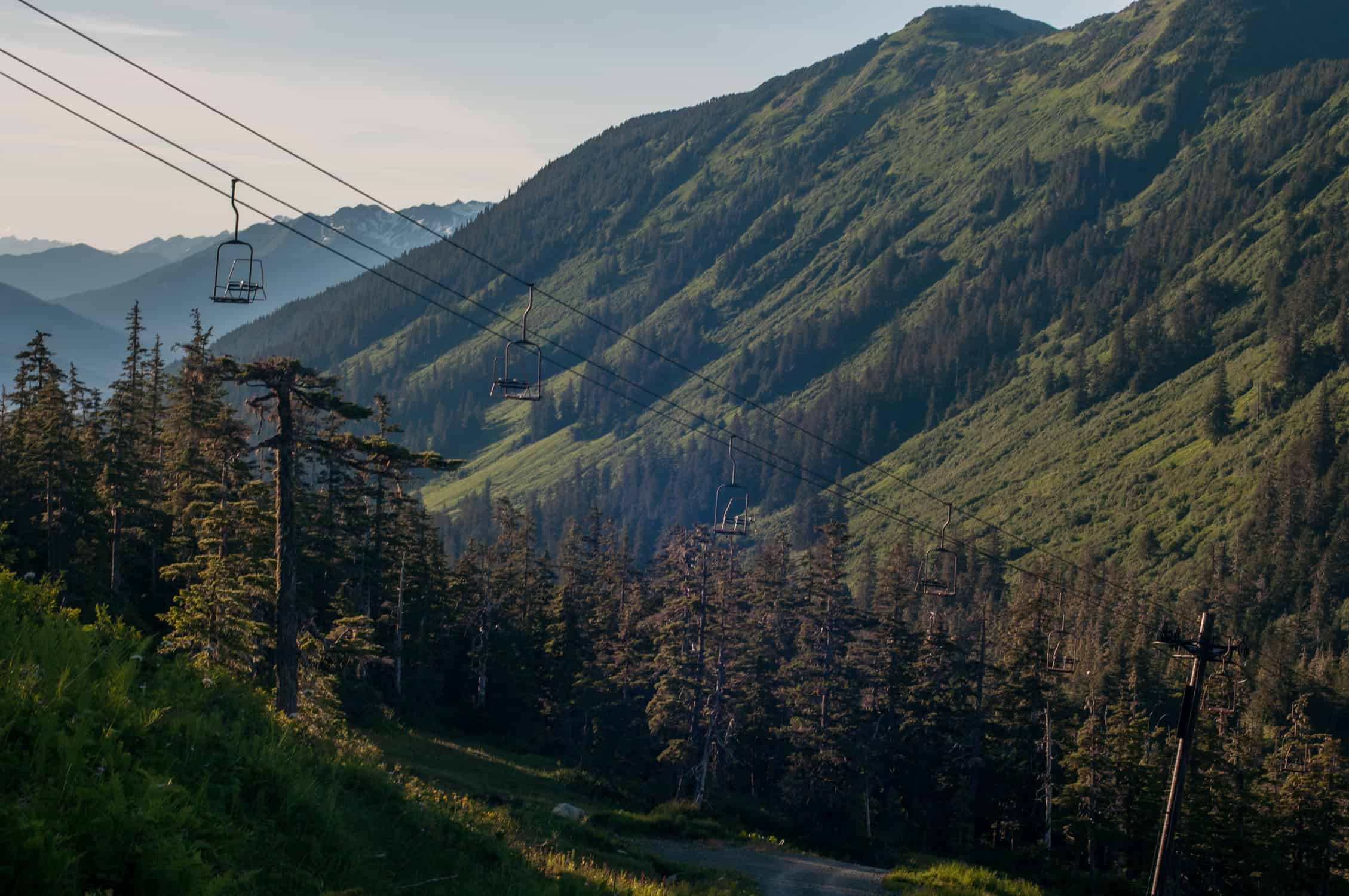The City & Borough of Juneau Assembly gave Eaglecrest staff their blessing to revisit the idea of developing commercial summer operations. We are in the preliminary stages and will be pursuing the idea in an effort to ensure the long-term operation, maintenance, and financial sustainability of Eaglecrest.
Ski areas throughout the industry, small and large, have increasingly turned to summer revenue streams in order to thrive year-round and mitigate challenging winters’ financial impact. Eaglecrest did make some steps to increase summer visitation in the mid-1980s. Since those plans were put on hold, the landscapes of Eaglecrest Ski Area and Juneau’s summer tourism have changed dramatically.
We see two general scenarios moving forward. The first is the status quo attempt to operate and maintain the ski area in the historical manner. The second is to pivot towards a model that leverages revenue streams from Juneau’s summer tourist visitation.
Before analyzing summer operations, it’s important to plainly address Eaglecrest’s status quo. Eaglecrest operates on a 70% cost recovery model with annual expenses exceeding winter revenues. The budget is balanced through an annual city subsidy. We are thankful for the support so we can continue offering world-class skiing, snowboarding, and youth programming to the residents of Southeast Alaska.
Although the status quo has been sustainable, it is our fiduciary responsibility to the residents of Juneau to consider all options to reduce or eliminate the city subsidy. State and local budgets are being stressed, and our region is in the midst of a five-year winter climate trend characterized by low snowfall and erratic temperature swings. Eaglecrest can mitigate these challenging winter weather conditions through snowmaking and still deliver a reliable product. Yet, ski area operating costs are on the rise nationwide, and doing business in Southeast Alaska adds another layer.
Ptarmigan Chairlift is going into its 45th winter of service at Eaglecrest, which is approaching the end of its service lifecycle. Summer operations are the best way for Eaglecrest to finance future capital improvement projects.
Building on Eaglecrest’s 2012 Master Plan, recent economic studies, and ski industry trends, we have developed an ambitious proof of concept for a well-rounded suite of summer recreational offerings. This primarily includes a new passenger gondola to effectively replace Ptarmigan, as well as a mountain coaster, ropes course, climbing wall, hiking and biking trail improvements, and other activities for locals and visitors of all ages and interests.
The visitor industry is one of Alaska’s few growing economic sectors, and it’s especially evident right here in Juneau. The cruise ships are visiting more frequently, and they’re carrying more passengers. Southeast Conference estimates a 17% increase from 2018 (1,165,000 visitors) to 2019 (1,361,400 visitors), and the growth projects to continue with ships and with independent travelers.
After preliminary consultations with tourism and ski industry representatives, it is clear that Eaglecrest is in a remarkable position to capitalize on summer operations. Conservative visitation estimates suggest that over time Eaglecrest could become financially independent from the city with profits reinvested to make winter operations even more affordable for locals.
As our community looks to balance the impacts of tourism’s growth, we believe developing summer operations at Eaglecrest is a solution for Juneau to grow responsibly and alleviate capacity concerns. Furthermore, the numerous indirect economic benefits of making Eaglecrest a year-round recreation destination would help our community flourish.
In the coming weeks and months, we will share our preliminary findings and seek public comment and third-party verification.
Thank you for the continued support of Eaglecrest.
Dave Scanlan
General Manager
Eaglecrest Ski Area


